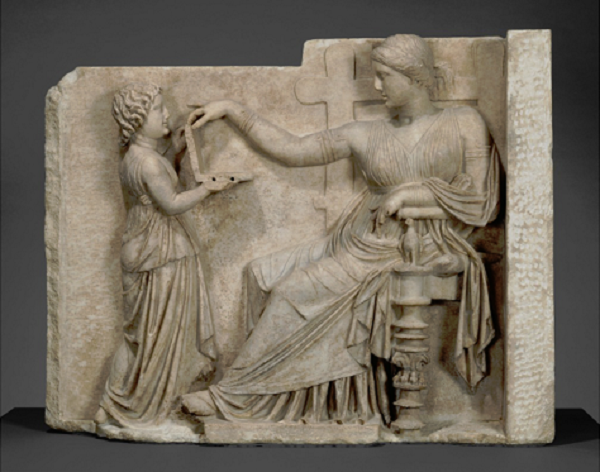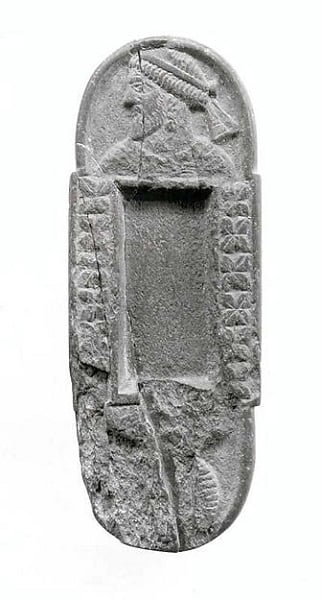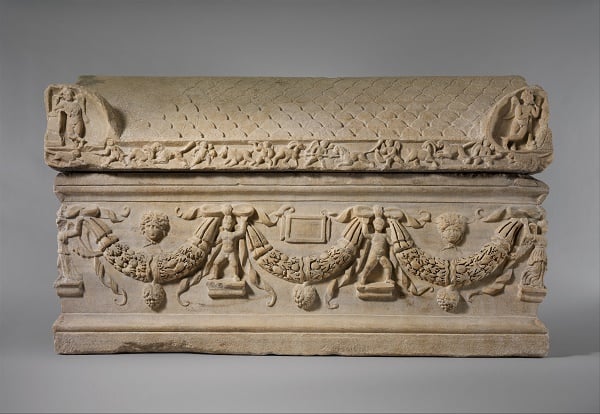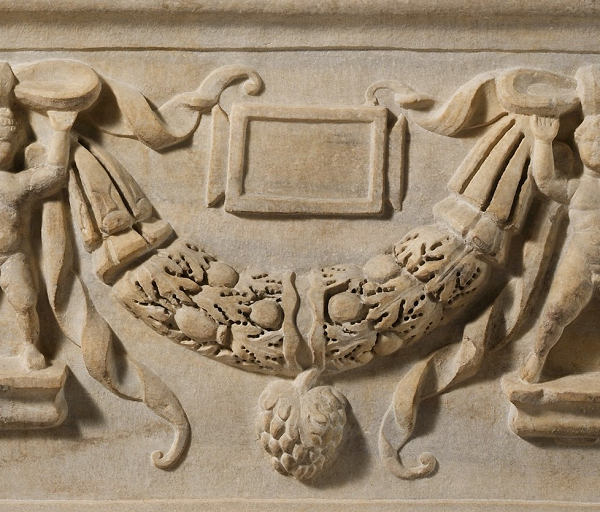Art World
Why Conspiracy Theorists Are Going Wild Over the Getty Museum’s Ancient Funerary Relief
The proof is in the pad.

Image: Courtesy of the J. Paul Getty Museum
The proof is in the pad.

Alyssa Buffenstein

An ancient funerary relief at the Getty Museum in Los Angeles has stirred up contemporary controversy, despite the fact that the artwork is over 2,100 years old. Some people are claiming that Grave Naiskos of an Enthroned Woman with an Attendant is proof that time-travelling ancient Greeks had contact with our modern world, by bringing a laptop back in time to 100 BC.
YouTube user StillSpeakingOut posted a video about the stone relief, claiming he came across it in an online conspiracy theory forum. The video, which has nearly 70,000 views, claims that the object in question is too small to be a jewelry box, and that it doesn’t match ancient descriptions of Pandora’s box. Plus, the holes in the damaged carving, contributors to the conspiracy forum claim, look like USB ports.
The Getty’s collection page, however, describes “a shallow chest” held by a servant toward her mistress, which “probably alludes to the hope of continuing earthly pleasures in the afterlife.” The relief was previously owned in the late 18th century by Sir William Fitzmaurice Petty, Marquess of Landsdowne. He reportedly removed the top of the three-foot by four-foot artwork to place in his London home.
This invented controversy got us thinking. Where else in art history can we find evidence of modern technology? We combed the archives of New York’s Metropolitan Museum of Art to find out.
First, we found what could be an awesome ancient phone case from 1st-century Mesopotamia:

The MET calls this a “Cosmetic Palette,” but could it be a protective case for an ancient iPhone?
Image: Courtesy of the Metropolitan Museum of Art.
And, as it turns out, Jesus may have had lots of really cool iPad covers:
Double-Sided Pendant Icon with the Virgin and Christ Pantokrator (ca. 1100), Byzantine.
Image: Courtesy of the Metropolitan Museum of Art.
Icon with Christ Pantokrator (11th-12th Century), Byzantine.
Image: Courtesy of the Metropolitan Museum of Art.
The Romans revered their iPads so much, they may have buried them in richly-carved sarcophagi:

Marble Sarcophagus with Garlands (ca. 200-225), Roman.
Image: Courtesy of the Metropolitan Museum of Art.

Detail of Marble Sarcophagus with Garlands (ca. 200-225), Roman.
Image: Courtesy of the Metropolitan Museum of Art.
Remember: The proof is in the pad.